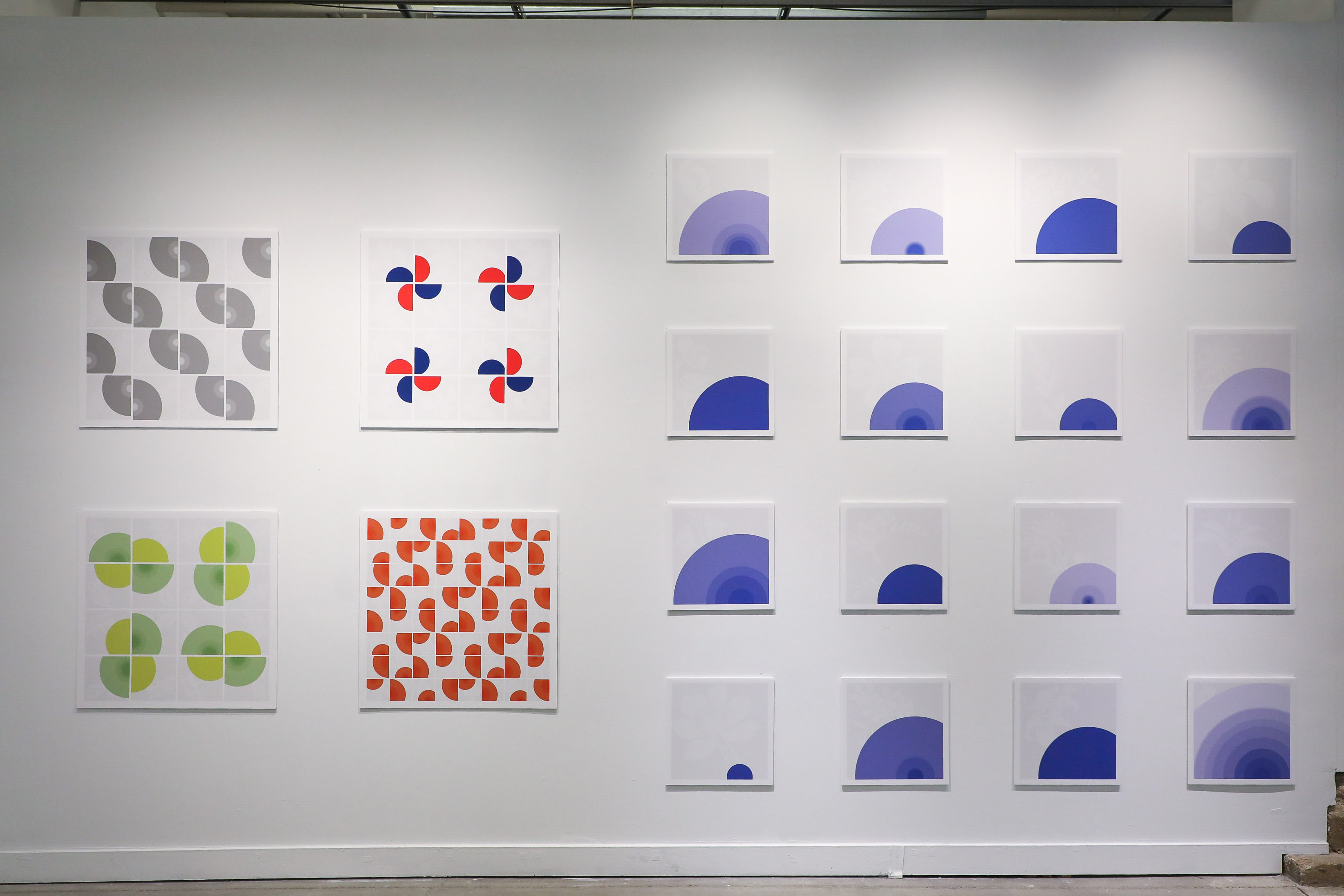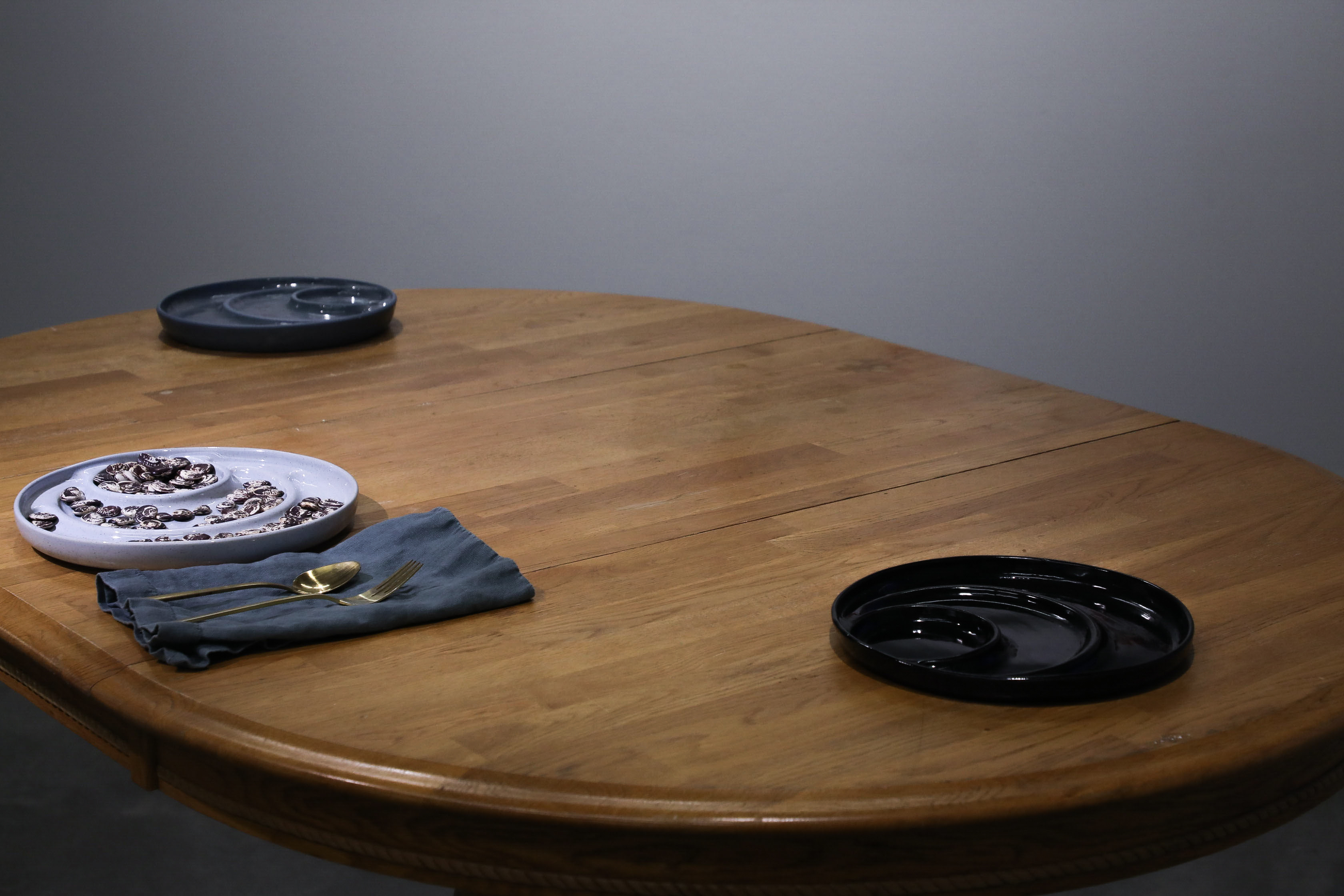How We Can Use Design to Better Communicate with Our Communities

As you walk into Urban Arts Space’s October exhibition with_, your eye is drawn to various colors, mediums, shapes, and sounds. There aren't many detectable empty spaces, which was an intentional decision made by the faculty of the Ohio State Department of Design. There is a range of research and creative production, such as data infographics, clothes, jewelry, board games, and interactive components for visitors. This exhibition showcases how designers approach their practice in partnership with designers, individuals, materials, technology, data, and especially within communities.
As I roamed the exhibition for the first time, I was elated by the myriad research topics. An undercurrent that kept appearing for me was community. I kept asking myself how design works in this space and the importance of design regarding our communities. The designers’ intentionality with their community can be seen in the planning and placement of data, technology, and words.
The first pieces that caught my eye were these blue, gray, and white 4 x 4 panels lining the wall as I turned the corner into the lower gallery. As I got closer, I noticed the blue concentric rings were a range of various sizes, and behind them were shadows of a variety of flowers. “Immigration Stories” by Mary Anne Beecher explores new possibilities for telling stories about generational movements through genealogical research and data. The stories on this wall were collected from an anonymous subgroup of Department of Design faculty members who volunteered basic locational information about their parents' places of birth extending to their immigrating ancestors. Mary left a step-by-step worksheet for guests to track their own family stories.
“Immigration Stories” isn’t just about a visual appeal to storytelling and archival; it prompts viewers to think more about how embedded information about our identities and history can appear in our environments in textiles, wallpaper, etc. It prompted me to think about how I could use genealogical data to archive my history and how I would present it.

I noticed a dinner table as I transitioned into the upper gallery. On it were three ceramic plates of starkly different colors: white, blue, and black. One Lovely Hour, designed by Amanda Huynh, is a research project that steered the construction of assistive plates for folks in long-term care settings. It was dreamed up as a way to help older adult immigrants living with dementia. This was an opportunity for the artist to make positive design interventions. The viewer can see the blueprint for this creation on the wall behind the ceramic plates. The designer and their partner, Professor Ranee Lee, drew them on bags on a plane from Paris to Toronto. These blueprints walk the viewer through multiple stages of production, including prototypes and testing.
From the blueprints and monitor, visitors can see how much intentionality was behind the plate's design. The designers considered how deep the cylinders of the compartments would be and how many compartments could be made to separate food. How far would they raise the rim to aid in loading food onto a utensil to ensure a person could easily scoop culturally appropriate food such as rice, veggies, and dipping sauces while still producing a visually pleasing plate? As I sat with the piece, I thought a lot about what it means to get older and what care for older individuals looks like across the globe. The approach to this need for this community is illustrative of the artist's care. As a viewer, I now see how design is not only crucial to accessibility but that it's also cultural.

After exploring these research projects, we can begin to question design in our lives, our creations, and the implications they have on us and others. This exhibition made me realize that design is everywhere, and we make choices about how to express information whether we are aware of it or not. The show leaves viewers questioning their current practices and opening them up to new possibilities. It made me think as a writer and creator where design shows up in my work. Do the stylistic choices that appear in my work come from my community? How might I explore them further? Understanding why we utilize design may help us better communicate with one another.
The with_ exhibition is on display until November 16, 2024 at Urbans Art Space.

